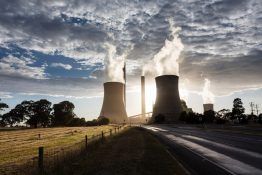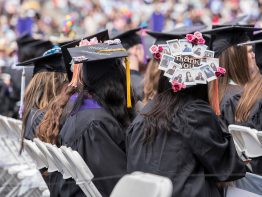Countries around the world pledged in the Paris Agreement to limit warming to 1.5 degrees Celsius, or, at most, 2 degrees Celsius. As emissions rates gradually begin to decline, countries are looking at how many greenhouse gases can still be emitted while remaining below these temperature targets, which are deemed the upper limits to avoid the most catastrophic impacts to the climate system.
Read more at UW News »Honoring College of the Environment Class of 2022 Graduates
Believe it or not, it is graduation season. A time of year where we come together to celebrate our graduates and their many accomplishments here at UW and the College of the Environment. In appreciation of their contributions to enriching the College of the Environment community, the College is honoring our graduates through funding a project jointly with the Campus Sustainability Fund (CSF).
Read more »How climate change will impact outdoor recreation in the Pacific Northwest
As the seasons change in Washington state from winter to spring, you can almost hear the collective cheers at the promise of warmer weather and sunnier days. For some, though, this time of year also marks the dreaded end of winter fun, as snow starts melting on the Pacific Northwest’s tallest peaks. But how will climate change affect outdoor recreation, not only during these transitional periods but throughout the year?
Read more »Diversity, Equity and Inclusion at UW Atmospheric Sciences
The UW Department of Atmospheric Sciences strives to create an inclusive and welcoming environment where students, staff and faculty are supported and set up for success. Department Chair Cecilia Bitz has prioritized Diversity, Equity, and Inclusion (DEI) initiatives, citing her personal work history as a motivator to create an equitable environment. “Diversity is so important to me personally because when I started my career, women were definitely a minority,” she said.
Read more »Model finds COVID-19 deaths among elderly may be due to genetic limit on cell division
Your immune system’s ability to combat COVID-19, like any infection, largely depends on its ability to replicate the immune cells effective at destroying the SARS-CoV-2 virus that causes the disease. These cloned immune cells cannot be infinitely created, and a key hypothesis of a new University of Washington study is that the body’s ability to create these cloned cells falls off significantly in old age.
Read more at UW News »





